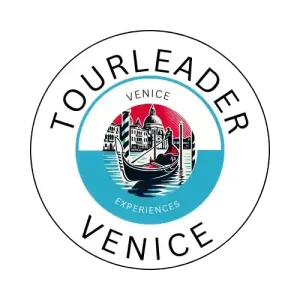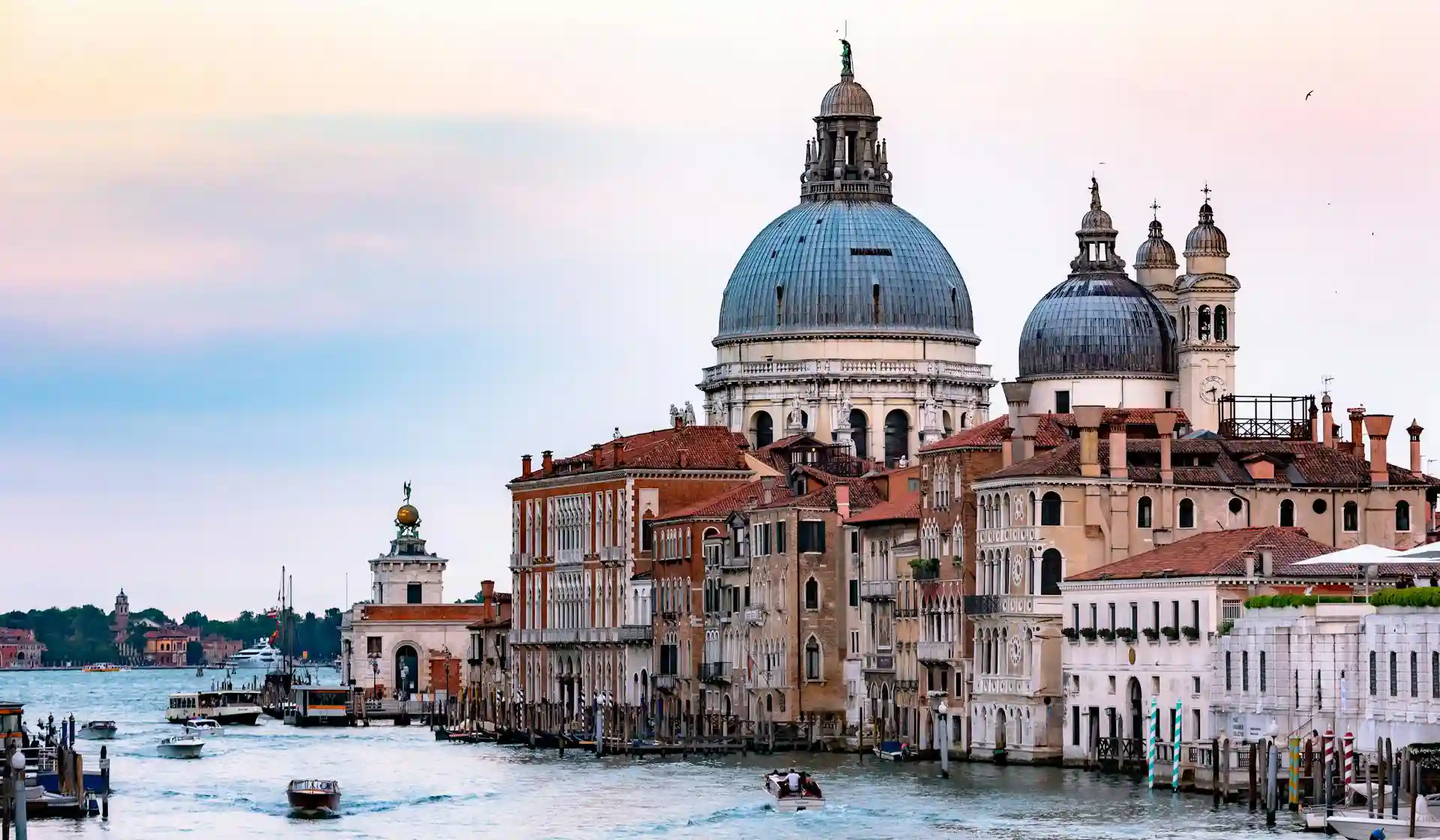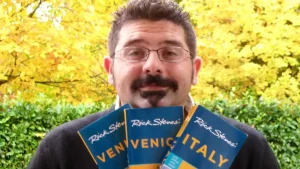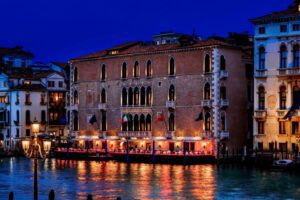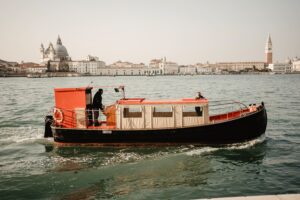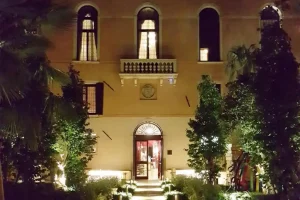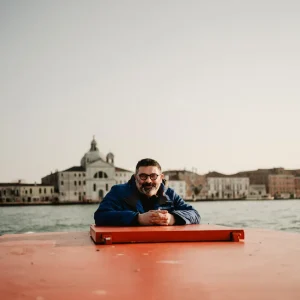🌊 Venice at the Crossroads: How Conscious Travel Can Help Save the Floating City
Venice faces a turning point. This magnificent city — built on water over a thousand years ago — now stands between survival and loss. Rising seas, decaying foundations, mass tourism, and the quiet exodus of its residents have created an unprecedented preservation crisis. Yet within this challenge lies a powerful opportunity: to turn travel itself into a tool for saving Venice.
As local guides who’ve spent decades walking these bridges and canals, we’ve seen firsthand how thoughtful tourism can protect what careless tourism erodes. When travelers choose authentic, conservation-minded experiences, they don’t just admire Venice — they help sustain it.
Our mission at Tour Leader Venice is simple: to connect visitors with the real Venice while ensuring their presence contributes positively to its preservation. The question isn’t whether tourism affects Venice — it’s how we can make that impact restorative instead of destructive.
🏛️ Understanding Venice’s Preservation Challenge
Venice sinks by one or two millimeters every year, while sea levels keep rising. The MOSE flood barrier system, completed in 2020 after years of debate and €6 billion in costs, protects the city from storm surges — but not from the slow erosion of its wooden foundations or the strain of overtourism.
Each of Venice’s 118 islands is connected by more than 400 bridges and 150 canals. Maintaining this intricate infrastructure requires traditional craftsmanship, rare materials, and continuous care. Few artisans still master the ancient techniques of Istrian-stone carving, lime plastering, or wooden-pile restoration that once defined Venetian resilience.
That’s why our Venice Hands-On Workshops — from glassblowing to stone carving — go beyond sightseeing. They help keep endangered knowledge alive while showing travelers exactly what “preservation” looks like in practice.
💶 Turning Tourism into Preservation
Venice welcomes over 20 million visitors a year, generating more than €3 billion in tourism revenue. Yet only a fraction supports true conservation. The new €5 day-visitor contribution introduced in 2024 is a first step — but it’s conscious travelers who hold the real key. Every euro you spend can either accelerate decay or fund renewal.
When travelers seek out sustainability-focused experiences — like our Off-the-Beaten-Path Orientation Tour or Venetian Rowing Experience — they support guides, artisans, and local communities actively engaged in Venice’s preservation.
How Your Tour Choice Makes a Difference
- 💠 Funds restoration projects that maintain historic palazzos and bridges.
- 🛠️ Supports traditional craftspeople — the lifeline of authentic conservation.
- 🌿 Encourages low-impact, sustainable tourism models.
- 📚 Educates travelers to become long-term advocates for Venice’s future.
Our tours are designed with transparency — we show exactly how portions of your visit help fund ongoing preservation projects and traditional craftsmanship training programs.
🧱 The Artisans Who Keep Venice Standing
Behind every marble balcony and gilded ceiling lies a story of craftsmanship. Venice’s survival depends on these unsung masters — stone carvers, shipbuilders, plasterers, and restorers whose work literally keeps the city afloat.
Istrian Stone: Venice’s Secret Armor
Istrian stone, quarried across the Adriatic, forms the foundation of Venice’s strength. Resistant to saltwater and time, it’s irreplaceable. Only a handful of artisans still know how to shape it properly.
One of them is Maestro Paolo Brandolisio, whose Castello workshop hums softly with chisels and dust. Visitors to our Behind-the-Scenes Artisan Tours can witness how his craft preserves palazzi across the lagoon — each carved column a piece of Venice’s living skeleton.
The Gondola Builders: Venice’s Floating Engineers
At the Squero Tramontin, gondolas are still made by hand using 11 different woods and centuries-old techniques. Watching the maestri d’ascia (master axe-men) at work is like stepping into history.
Our Private Grand Canal Boat Tour often includes a stop at a traditional sq uero, where travelers meet the artisans keeping Venice’s iconic silhouette alive — sustainably, beautifully, and one boat at a time.
Restorers & Architectural Guardians
Maestro Giovanni Giol and his team of restorers dedicate their lives to conserving Venice’s crumbling facades using lime-based mortars and techniques from the Renaissance. Watching them work reveals that Venice’s true beauty isn’t just what you see — it’s the care hidden behind the walls.
Join our Doge’s Palace & St. Mark’s Private Tour to learn how restoration teams protect these world treasures daily, balancing history and modern science.
🌿 Protecting the Lagoon: Venice’s First Line of Defense
Venice can’t exist without its lagoon — a fragile ecosystem that shields the city from the sea and nourishes its culture. Every boat wave, every piece of litter, every change in tide affects this balance.
Sustainable Transport
Traditional wooden boats like sandoli and bragozzi glide across shallow waters without damaging the lagoon bed. Our Slow Lagoon Sunset Tour celebrates this tradition — quiet, scenic, and sustainable.
By choosing slow boats or walking routes instead of high-speed motors, visitors drastically reduce wake damage that undermines Venice’s fragile foundations.
Supporting Traditional Fishing
Fourth-generation fisherman Giuseppe Vianello still follows the tides using nets designed to respect seasonal cycles. His knowledge sustains both ecology and heritage. Experiences like our Lagoon Discovery Tour let travelers meet people like Giuseppe — stewards of Venice’s oldest partnership: humanity and the sea.
Responsible Waste & Energy Choices
Every bit of waste in Venice travels by boat to the mainland, consuming resources that could fund conservation. Responsible visitors reduce single-use plastics, refill bottles, and favor local eateries that practice sustainability. Our Cicchetti & Wine Tour supports traditional bacari using seasonal, local ingredients — a delicious way to eat responsibly.
🏠 Keeping Venice Alive: Supporting Local Communities
Preservation isn’t only about buildings — it’s about people. When Venetians are forced to leave, the city loses its soul. Sustainable tourism ensures locals can afford to live, work, and raise families here.
Neighborhood Businesses
From century-old pharmacies to artisan bakeries, neighborhood shops are the backbone of residential life. Every espresso bought in a local café rather than a chain helps keep these communities alive. Our Off-the-Beaten-Path Tour visits authentic districts like Sant’Elena and Castello, showing how daily life — not just monuments — sustains Venice.
Traditional Housing & Restoration
When homes are maintained for residents rather than short-term rentals, buildings receive regular, conservation-minded care. We highlight these residential zones during our tours, explaining how housing policy directly affects architectural survival.
🎓 Educational Tourism: Creating Conservation Advocates
Conservation tourism turns visitors into guardians. Once travelers understand the city’s challenges, they rarely forget them — and often continue supporting Venice long after their trip ends.
Conservation Awareness in Action
Our guides incorporate behind-the-scenes insights into restoration, engineering, and lagoon ecology. On a Lagoon Tour, you’ll learn how water levels are monitored. Inside Doge’s Palace, you’ll see how fragile frescoes are stabilized against humidity. Knowledge deepens appreciation — and sparks advocacy.
Passing on Traditional Knowledge
Every workshop you join — from our Mask-Making Workshop to Paper Marbling — helps fund apprenticeships that ensure these skills survive another generation.
⚙️ Technology & Innovation: Tradition Meets Tomorrow
Venice’s preservation isn’t frozen in the past — it’s a blend of ancient craft and modern science.
MOSE Flood Barriers
The MOSE system, 78 massive mobile gates rising from the seabed, represents engineering at its most ambitious. Our educational lagoon tours explain how it functions and why it’s only part of a much larger preservation puzzle.
Foundation Monitoring
Beneath the marble lies millions of wooden piles. Advanced sensors now monitor moisture and movement, ensuring timely interventions. We discuss these innovations on tours focusing on Venice’s engineering marvels — proof that the city’s survival relies as much on science as on art.
Digital Preservation
3D scanning projects and virtual archives document every relief and fresco, creating digital blueprints for future restoration. Visitors who support these initiatives — through conservation-oriented tours or donations — ensure that Venice’s beauty endures even in the digital realm.
🌍 Global Cooperation & Climate Adaptation
Venice is both a warning and a laboratory for the world’s climate future. International funding, university partnerships, and cultural exchanges now play vital roles in its preservation.
Our collaborations with local conservation projects and international researchers showcase how tourism can fund adaptation — from renewable energy pilots in historic buildings to carbon-offset programs restoring lagoon vegetation.
Even visitors can help: choose eco-certified accommodations, offset your travel emissions through local restoration programs, and prioritize slow travel over fast consumption. Every mindful choice matters.
🧭 The Role of Expert Local Guides
Professional Venice guides trained in conservation do more than explain art and history — they connect the dots between beauty and responsibility. We show travelers what lies behind the postcard views: foundation work, community struggles, and everyday victories of those who refuse to let Venice sink quietly.
Because preservation begins with understanding — and understanding begins with a good story, told by someone who loves this city deeply.
🌿 Discover Conservation-Focused Venice Tours
💡 How to Be a Part of the Solution
- Choose small-group or private tours led by licensed local guides.
- Support artisans and workshops preserving traditional crafts.
- Stay in locally owned accommodations, not global chains.
- Reduce waste and respect quiet hours — Venice lives here, not just performs here.
- Share what you learn — awareness multiplies impact.
Every traveler has influence. Your curiosity, respect, and spending choices shape the Venice that future generations will inherit.
Join us in transforming travel into a force for good — for the lagoon, for the artisans, and for the families who still call this fragile paradise home.
💙 Plan Your Sustainable Venice Experience with Tour Leader Venice
FAQs — Conscious & Sustainable Travel in Venice
How can travelers help preserve Venice while visiting?
Simple choices make a huge difference. Book small-group or private tours with local guides, such as our Off-the-Beaten-Path Orientation Tour or Venetian Rowing Experience, which directly support Venetian artisans, families, and conservation projects. Stay in locally owned hotels, use refillable bottles, and favor restaurants that source local ingredients — every mindful action protects the city’s delicate balance.
What are the most eco-friendly ways to explore Venice?
Walk, glide, or go slow. Choose vaporetti or traditional wooden boats like in our Slow Lagoon Sunset Tour instead of high-speed taxis, and explore neighborhoods like Castello or Cannaregio on foot. These modes reduce wake erosion, cut emissions, and let you experience authentic Venice at the right rhythm.
Do sustainable tours really help local conservation efforts?
Yes — with Tour Leader Venice, part of every tour’s proceeds supports heritage preservation, artisan apprenticeships, and lagoon restoration. Joining a Murano Glassblowing Workshop or Cicchetti & Wine Tour directly funds craftspeople and neighborhood economies that keep Venice alive for generations to come.
